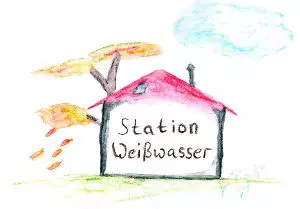
Environment and Biodiversity
Place
Saxony, Germany
Sponsor
Petra Brünner
Grant(s)
15 000 € to the Selection Committee at 2009/09/29
Project leader
"Our employees are personally involved as experts at the meetings and theme courses. After having observed how the grant from the Foundation enhanced the development of the "Water Circle Project" three years ago, I am hoping that this success will be repeated for this solar energy project."
Petra Brünner
Located at the border between Germany and Poland, in the Dresden district, the "Natural Station" of Weißwasser has for over fifty years been welcoming young persons who wish to develop their technical, environmental and artistic skills in an entertaining way. This highly diversified nonprofit association presents, among other projects, an educational program called the "Water Circle", in a lake district to boot!!But also a garden, experimental rooms, robotics workshops, a nature discovery trail... and all of this with the greatest respect for the environment and with a genuine spirit of sharing knowledge with the children of the various schools and the associations of the neighboring communes.
Having registered the success of the Water Circle, the teams in place felt it would be a good idea to offer its public a new feature, clean energies. And photovoltaic energy was selected with the construction of a 5.4 kW installation on the roof of the main building.
The energy harnessed will be used to pump rainwater for the garden and the aquatic biotope recreated on the site. But at the Station, nothing is ever done without the kids.
Two new jobs and a concrete application of solar energy for better environmental education
A number of adolescents got together in a nonprofit association to build the installation. After having visited a similar facility, they are preparing to carry out a large share of the work themselves. The Models Group and the Electronics Group will also be joining the project.
Once the worksite is completed, the project will help discover the functioning of a new aspect of sustainable development and should attract a steadily growing public, especially because the integration of nearby Poland in the European Union in recent years will make for increasingly frequent exchanges.
The Veolia Foundation will therefore participate in the construction of the roof, as well as the refurbishing of the interior of the main building, which now receives many more visitors. And two annualized (September to December) part-time jobs will be created. Clean energy plus jobs makes for truly sustainable development.

